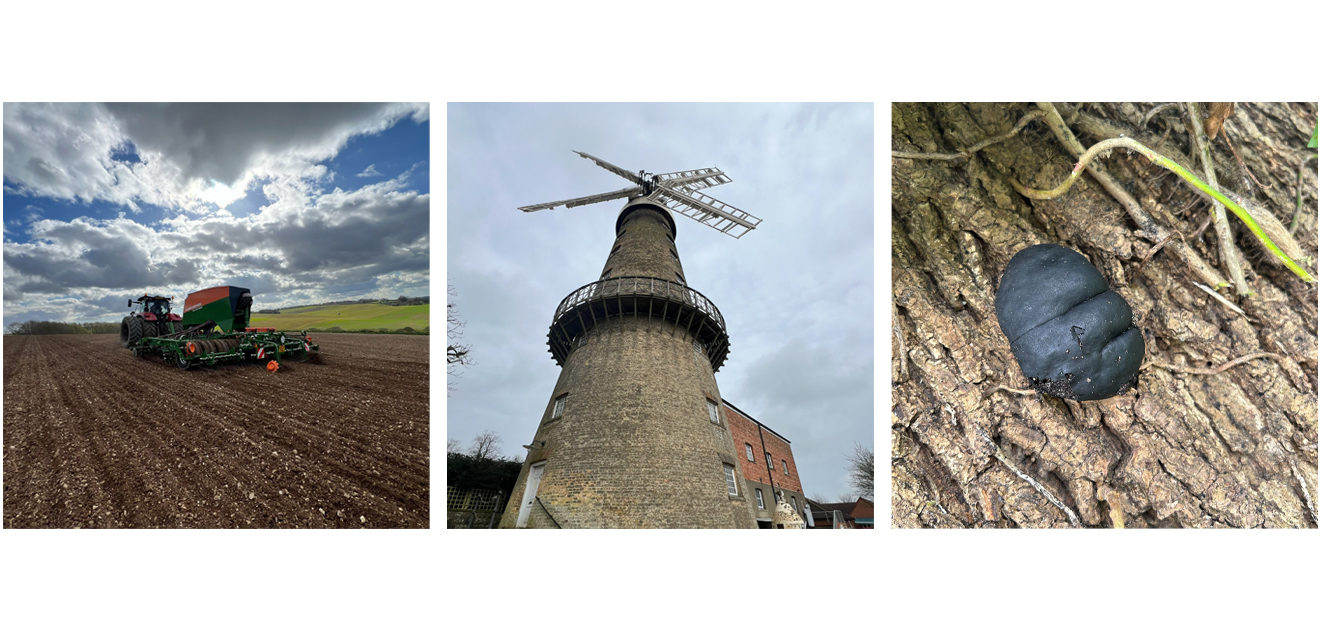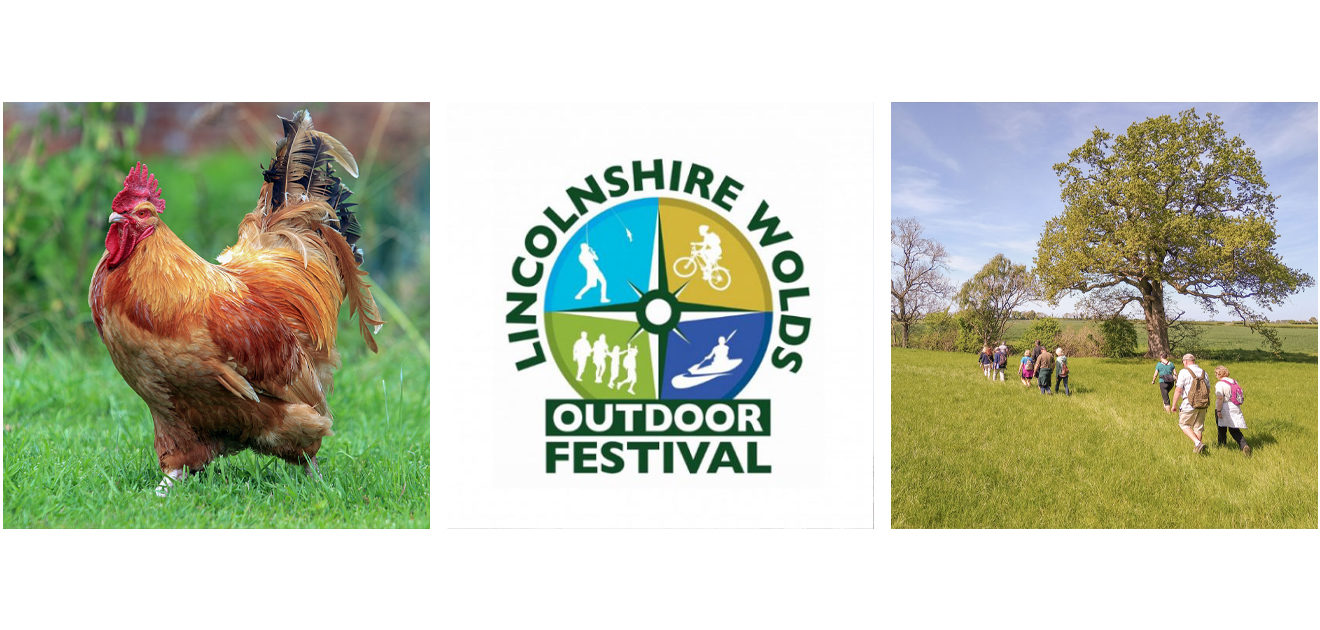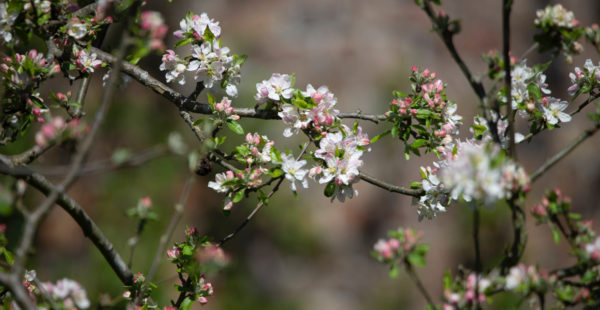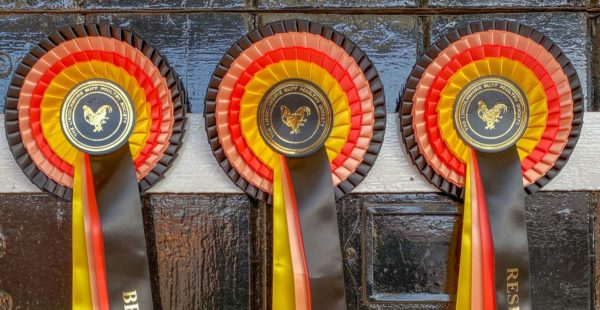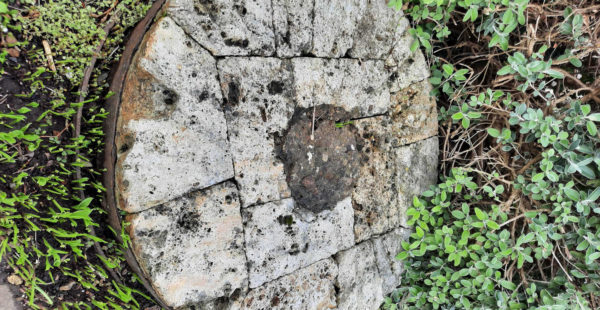A Week on the Estate: Charlie’s Buffs, Alfred’s Cakes & Festival News
Easter is upon us and Daylight-Saving Time starts this weekend. Don’t forget to give yourself a generous lie-in on Sunday unless, like us, you have a boisterous song thrush in your neighbourhood who thinks sleep is for wimps. The weather outlook for Easter weekend is unsettled with temperatures in the range 12C-4C, patchy sunshine and scattered showers. To us, that sounds great for walking, provided you pack a waterproof.
Paul Barnes has been out and about on the land and beyond. He snapped pics of spring beans being slotted in on a fine blue-sky day. He also enjoyed a fascinating tour of Moulton Windmill courtesy of its friendly and knowledgeable volunteers. We’re aiming to have our organic grains milled at Moulton then use the flour for baking trials at the Estate. We’ll keep you posted but we don’t think we’ll be short of volunteers for the taste-test.
The Conservation Club focussed on tree conservation throughout March. Being out in the fine spring weather with new life buzzing and singing all around them was a joy. One good spring job is pruning ivy. Ivy is not necessarily harmful to trees and can be a boon for wildlife; sometimes, however, a good haircut is needed to reduce the load on older trees or uncover bark. In any case, we prefer elbow grease to agrichemicals.
On the exposed bark, the team were fascinated by King Alfred’s cakes. Also known as cramp balls or coal fungus, these matt-black lumps are the fruiting bodies of Daldinia concentrica. The common names for this fungus hint at its usefulness to human foragers throughout history. Rub one of King Alfred’s cakes between two pieces of coarse, dry wood, or strike a flint near one, and it becomes excellent kindling. Here’s a fungal factoid we had to share with you: Ötzi, a man who lived between 3,350 and 3,150 BCE, and whose naturally mummified remains were found in the Tyrolean Alps in 1991, was carrying tinder fungus as part of a fire-lighting kit.

